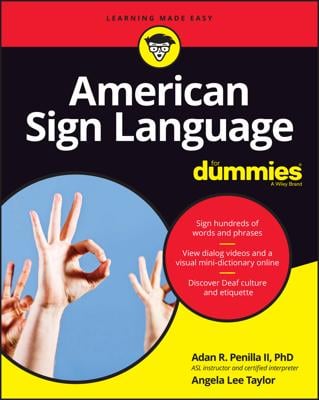A relay service is just that — a telephone service that relays information to a Deaf caller who doesn’t have or isn’t using a TTY telecommunications device. A toll-free number connects you to a TTY operator.
You can find the toll-free TTY-operator number in the front section of any phone book under Directory Services or from any agency that provides services for the Deaf or hard-of-hearing.
You can choose one of many numbers when using the relay service. Just pick the one that will best suit your needs:
A voice number that a hearing person uses to call another TTY user or a TTY number that a Deaf caller can dial to contact a relay operator to call someone who doesn’t have a TTY. Each state has a different number.
A three-digit number, 711, that connects a non-TTY caller to any state’s relay service.
TTY users can call the Operator Services for the Deaf (OSD) for directory assistance at 800-885-4000. All states have their own relay service.
To call the relay internationally, dial 605-224-1837.
After you’ve used the relay service a few times and experienced how time-consuming a three-way conversation can be, you’ll want to get your own TTY.
Using a relay service
When you call the voice operator, the first thing the operator will say is, “This is operator _____.” You’ll then hear the question, “ID number — may I have the number you’re calling?”
Give him or her the number.
You’ll be asked if you’ve ever used the relay service.
Answer yes or no.
If you haven’t, a short explanation is given as to what you can expect during the duration of the call. You’ll also be told that the operator won’t be able to hear you until the person on the other end comes on the line. You can hear the phone ring until it’s picked up, but you won’t hear the operator identify the relay service and your name to the person you’re calling.
The operator usually lets the phone ring ten times before coming back on the line to let you know if there was no answer. If you’re calling a physically disabled or an elderly Deaf person, however, you may want to ask the operator to let the phone ring longer.
When you do connect with someone on the other end, be sensitive regarding the operator. Most of them are skilled typists, but you may have a tendency to speak faster than the operator can type. Try speaking in segments, listening to the operator’s keys. When you hear the typing stop, you know that you can continue speaking.
Speaking privately through a third party
The operators who work for relay services agree to keep the conversations that they hear confidential. If you have to discuss issues that you feel uncomfortable talking about with an operator who’s of the opposite sex, you can request to have an operator of your same sex relay the call — as long as one is available.
Understanding conversations with relay service
When talking through the relay, remember that some Deaf people write like they sign. English and American Sign Language (ASL) often don’t share the same grammatical rules. The typist will repeat everything verbatim, regardless of who’s doing the typing. The typist will repeat exactly what the Deaf person types and then the operator will type exactly what the hearing person says.

